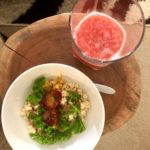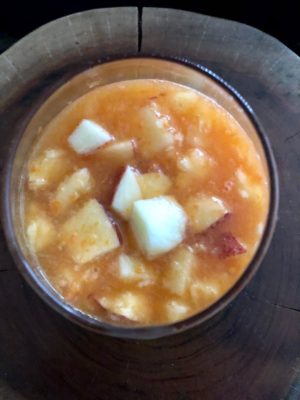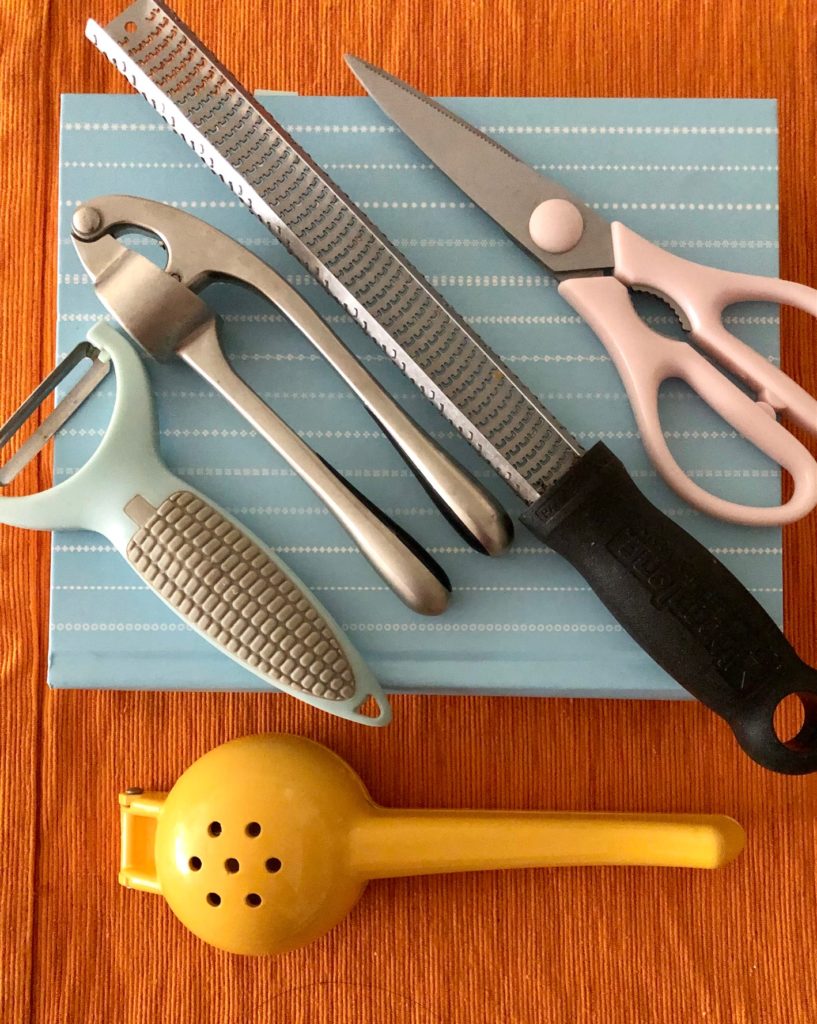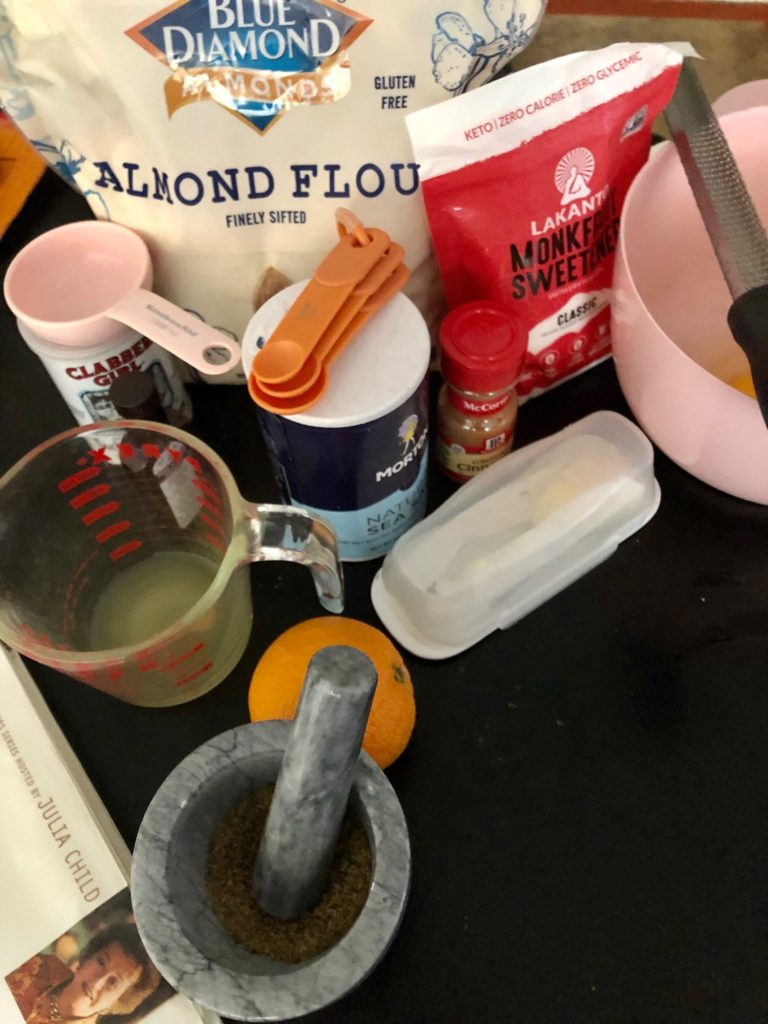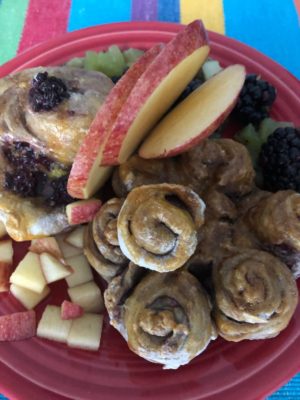Dyshidrotic eczema is often tied to allergies whether outdoor or food-related is individual to each body.
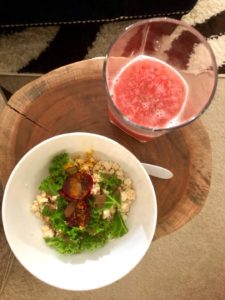
The outward showing and what makes it different from other types of eczema is that it often appears as clear blisters on hands and soles of feet (…an odd place). So it’s a little easier to spot.
A dyshidrotic eczema reaction is individual and it’s an overreaction in the body, as are other types of eczema.
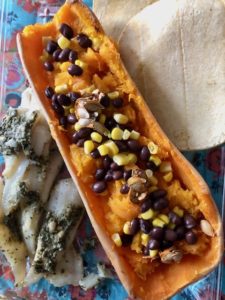
Dyshidrotic eczema can spread but not because of your spreading it in a contagious way. It can feel that way. But, if it does spread on its own, it’s an internal body reaction. So you can cross that worry off your list.
Like most eczema types, it has dry and irritated skin as general symptoms.
Irritation in the mind and body and in the mind-body connection is a form of high Pitta.
Knowing this helps because then you can focus on doing anti-Pitta moves like an anti-Pitta diet.
I learned this in the summer of 2021 when I ended up in the hospital emergency room for a dyshidrotic eczema diagnosis.
I had a heat blister that quickly turned into a foot infection a week later where my foot swelled to greenish, purple colors. Not the Northern Lights aurora borealis effect you want on your body. 😕
During my visit, the doctor confirmed my dyshidrotic eczema symptoms… and what I already knew and had researched on my own in 2020 when I first experienced the condition.
Dyshidrotic eczema that I’ve learned to partner with is still a sign of inflammation. And while acute, it’s not that cute ☺️. And the symptoms can be preventable.
Climate Changes As a Dyshidrotic Eczema Cause
With sensitive and thirsty summer skin that many of us have felt, the fiery and itchy summer effects of global warming are only intensifying.
Our bodies rely on this livable earth. But in perspective, 10 degrees hotter is still doable compared to the 800-degree temps on Mercury. 🌎
Mother Earth is the Queen. 👑
And besides heat, dyshidrotic eczema flare-ups can come from hypersensitivity to climate changes and climbing hotter weather.
This requires deeper skin care and moisturizing as preventative measures for dry skin. While heat and climate change can be one eczema cause, there are many eczema types and triggers.
Some other triggers can be food or other allergies.

Low-Sugar Planning Helps Eczema
Anything at any time like air, can make the dyshidrotic eczema situation worse no matter the cause. And being smart, not eating too much sugar is one area that is controllable for any of us.
It’s smart to start at breakfast so you haven’t spent all your sugar early in the day. Eating more plant-based and organic foods help offset undesired triggers and effects.
Offsetting sugar at every meal is a good strategy to avoid the skin crawling effect, if you’ve ever experienced that feeling. It’s going to make your life easier.
I know how hard that can be if you’re a sweet tooth because I thought that would be impossible for me to give up some sugar. But that’s how you lower sugar cravings. And I know it is possible to do as I’m living proof! 🧡
Funny I love baking, right? 👩🍳
But actually, you can better control how much sugar and sweetness is added when you do your own baking, cooking, and meal prep.
That’s why I can still enjoy low-sugar summer desserts. I bake with anti-inflammatory sensitivity and that’s why I started creating my own anti-inflammatory recipes.
And you can do your own creations in your home in a healthy way where you don’t give up the love of sugar. Moderation and substitution are your friends.
I found most recipes out there call for so much sugar (that once upon a time I wouldn’t have blinked an eye too 😜). But when you make your own dishes and bakes, you’re more selective and cautious.
And what I learned was that I craved sugar less after eating less sugar. So that became my way.
And I focused on the positives. In my world, it’s about diverse eating from the rainbow 🌈 with food varieties that are doing the body good. The rainbow are rich polyphenols that help our guts.
That btw, is one good reason you would consider eating a variety of healthy foods.
And in that way, I ruled out that any one food was a likely cause for dyshidrotic eczema. Sugar I could see was an overall offender, but all sugars aren’t created equal.
Fruits are a good example. Fruits have sugar (fructose) but they have so much fiber and vitamin benefits that offset the negative. You wouldn’t want to cut fruit out, but have them in moderation.
You could also choose lower sugar ones like berries and even better, an avocado fruit. 🥑 Or a green banana that will lower glycemic so better for the anti-inflammatory effects.
Food Allergies, Ayurveda, and Eczema
I’m sensitive to other people’s food allergies having worked closely in catering foods and party planning management for a decade. Many of us have food sensitivities that’s on a spectrum of allergies, and different than Celiac Disease (that’s a disease).
Finding our happy gut is something that each of us get to explore and keep learning about as our bodies change.
Food balancing our preferences and food sensitivities is the best tip I can give to avoid tipping the scales for inflammation, dyshidrotic eczema, and other types of eczema… PLUS still enjoy foods.
Part of that is not giving up on any one healthy food unless they’re a known offender. Using moderation or balance as a guide is much more satisfying and doable.
When you operate with restoring balance year-round as a goal, then you notice when something is “off” even if it’s just ever-so-slightly so you can remedy before it’s too late or the scales have tipped to symptoms.
Something as simple as the scents and aromas you’re drawn to is an Ayurvedic clue as to what’s going on. Testing spice and food aromas are a couple of fun Ayurvedic ways we can all use to test our bodies this season.
You can learn more about restoring your body’s Ayurvedic imbalance.
Anti-Inflammatory Foods And Dyshidrotic Eczema
Coupled with an Ayurvedic balanced food approach, adding more sustainable anti-inflammatory foods and less gluten-foods help prevent dyshidrotic eczema.
And to help offset this, leaning more into a whole, plant-based diet that’s Ayurvedic and anti-inflammatory gives us all an edge, as we do good for our body AND for the planet.
Some anti-inflammatory foods are high in cobalt and nickel that’s found all over the earth and in some of the healthiest plant-based foods such as cocoa, nuts, and even leafy greens.
Dark chocolate is anti-inflammatory and can be good to go back to in moderation after eczema inflammation symptoms go away.
So what’s the best plan? Still eating a variety of planet healthy foods is still the best bet unless you have a known allergy.
It’s also good to stay thankful for our bodies for doing all that it does every day of the year under the hood.
Keep on keepin’ on! 🎉
Turmeric Tofu Scramble
Ingredients
- Tofu
- water or olive oil
- turmeric spice and black pepper
- pimento
Instructions
- Cut tofu into small pieces or dices. For soft tofu: cook in a pot with water on medium heat for about 15 minutes.
- For crispier tofu: in a skillet, add a drizzle of olive oil to the skillet. Cook the same as soft tofu without water. Flip tofu about every 5 minutes.
- Use a masher or fork to crumble cooked tofu.
- Add turmeric spice, black pepper, and pimento to heat enhance the curcumin effect.
- Add your favorite vegetables such as cooked kale.

